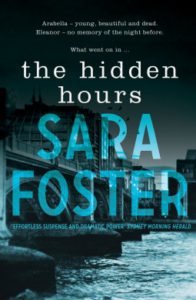Narrative structure underpins every story, and can be developed and subverted to great effect in crime and suspense fiction. Like the stitching that holds a garment together, narrative choices are often so subtle or accepted that they might pass unnoticed. A reader will usually accept a story told in third-person past tense without much thought, because we’re so used to this format. However, some authors play with structure in such original ways that it becomes a standout feature of their work. There’s the unusual second-person approach in You by Caroline Kepnes. The twisting narrative voice of Gone Girl. And one of the more defining moments of my reading/writing life came from reading Beneath the Skin by crime writing duo Nicci French. The book is in three parts with three different narrators telling the story, and I’d settled into part one when Bam!—the authors did something I’d never seen before. As a device, it worked a treat: and I was hooked. The audacity of it still makes me applaud them 25 years later.
Sometimes the reasons behind authors’ narrative choices are obvious, other times not so much. Occasionally readers might not realize the author is playing with structure until the end (Sister by Rosamund Lupton). However, the choice to tell a story in a certain way can make or break its success. And the impact of unusual narrative structures, when done well, has made me think carefully when planning my own books. It’s imperative to decide on structure and voices before writing if you want to avoid painful rewrites. (Full disclaimer: I’ve not always chosen the right path the first time, and there’s nothing worse than the sinking feeling a few chapters in when you realize the voice or structure needs changing!)
My books all have different structures and clearly defined reasons behind them. Sometimes it’s a simple myopic point of view: chosen to narrow the perspective, or to ensure the atmosphere is brooding and tense, keeping the readers as bewildered and threatened as the protagonist. Often I’ve chosen to write from multiple perspectives, because the multi-faceted approach can deepen readers’ enjoyment of a story. It allows them to get close to a few of the main characters, and heightens intrigue and suspense, since we can see characters disagreeing with one another’s perceptions or proactively hiding things from each another. Once I wrote all but one of my characters in third-person, but the mother spoke in first person: to both isolate and highlight her role in the story. I find choices like this get readers talking, and can help add impact and nuance in the right places.
Occasionally I’ve tried something completely different. In Shallow Breath I made each section of the book echo the feel of rolling waves, while adding a new narrator into each of the seven sections. And in The Hidden Hours I put vignettes at the start of each chapter to balance the myopic perspective, and addressed the possible nervous breakdown of my central character Eleanor within the structure of the book. Her memories are completely repressed to begin with, then start to intrude in organized form, as chapters alternate between past and present. But by the end of the story there is no longer any division: paragraphs are interwoven with past and present as the stakes get higher.
I love the playfulness of this kind of narrative exploration, and my hope is that even if the reader cannot identify the purpose of the structure, they can feel it sweeping them up into the story, creating suspense and delivering dramatic punches at just the right moments. At the same time, varying the structure keeps the writing process interesting and challenges me to find new ways to tell a tale. It adds an element of risk to the process, but, as the master storytellers and innovators have shown us, it’s often by taking such risks that we can reach new heights in our storytelling.
*


















